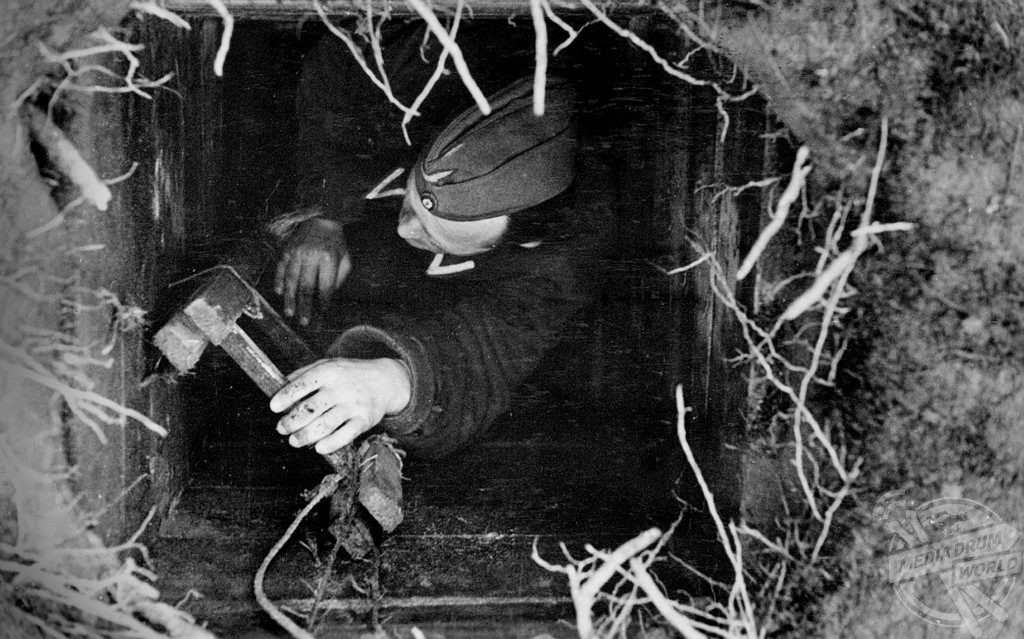By Alex Jones
REMARKABLE vintage photos mark 75 years since the ‘Great Escape’ – the most famous breakout of all time.
A stunning series of shots depict the ingeniously engineered tunnels which helped nearly 80 soldiers escape from the notorious maximum-security camp Stalag Luft III, the wretched living conditions that the POWs were confined to, and the innovative contraptions that soldiers built to help carry out the audacious bid for freedom.
Another sobering photo shows a sombre memorial to the 50 escapees who were callously murdered by the Gestapo after they were recaptured. Hitler ordered their deaths personally. Of the 76 men who made it through the tunnels on that fateful night on 25 March 1944, only three made it home.
The incredible images have been brought to light by Charles Messenger in a fascinating new book ‘Stalag Luft III: The German POW camp that inspired the Great Escape’, exploring the history of the ‘escape-proof’ Polish camp which was the focus of the 1963 American World War II epic film starring Steve McQueen, James Garner, and Richard Attenborough.
“The Great Escape was a much more elaborate affair than escape attempts before it and its object was to get not just three men but 200 out of the camp,” explained Messenger.
“It was very much the brainchild of Big X, Squadron Leader Roger Bushell, who masterminded the escape.
“Up until then, only one tunnel was being dug at a time so that all resources could be concentrated on it.
“When the Germans discovered it, it meant starting all over again. Bushell therefore reasoned that if a number of tunnels were simultaneously started and the Germans found one, they would relax their guard.”
Work initially started on three tunnels codenamed ‘Tom’, ‘Dick’ and ‘Harry. Outside of the physical work digging out the tunnels – undertaken by downed airmen whose planes had crashed on Axis territory – there was also paperwork and ‘civvie’ clothing to produce to help aid those on the outside.
In addition, cunning methods had to be devised to remove the spoil from the tunnels without getting caught. Typically, soldiers would shake the dirt out of their trousers at various points around camp, earning themselves the nickname ‘penguins’.
Although the three tunnel entrances were finished by the end of May, work on ‘Harry’ and ‘Dick’ stopped in June so that efforts could concentrate on ‘Tom’. In September, ‘Tom’ was discovered.
The following year, in January 1944, work on ‘Harry’ resumed. By 25 March, the 102-metre-long tunnel was ready. That moonless night 80 men climbed out of the escape shaft, shored up by bedboards of the camp’s inmates.
Due to a miscalculation, the tunnel was several feet short and came up before the relative safety of the treeline, leaving the escapees with a heart-stopping dash into the dark forest ahead of them. Four men were caught at the tunnel’s mouth when the escape was spotted, 76 got away. Only three made it.
“At the exit end of Harry, the Germans had spotted what was happening and arrested three of the escapers on the spot,” continued Messenger.
“Of the other seventy-six, some were arrested close to the nearby town of Sagan, but others managed to get further afield before being caught.
“The truth was that the Germans realised very quickly that there had been a mass escape and a widespread alert was put out.
“Hitler soon got to hear of it and was furious.
“He initially wanted all those captured to be shot, but this was reduced to a list of fifty, including Roger Bushell, who was, in any event, a marked man.
“All of those who were to be murdered were handed over to the Gestapo and, wherever they were held, they were taken in cars on the pretext of being sent back to a camp.
“During the journey the car would stop and the prisoner would be told to get out to relieve himself.
“He would then be shot in the back of the head by one of the Gestapo men.”
Amid all this tragedy, three of the escapers, two Norwegians and a Dutchman, made ‘home runs’.
The Norwegians, Sergeant Per Bergsland and Lieutenant Jens Muller, pretended to be electricians to affect their escape whereas Flight Lieutenant Bram Vanderstok used the underground resistance forces in the Netherlands to reach safety.
‘Stalag Luft III: The German POW camp that inspired the Great Escape’, published by Pen and Sword, is due for release in March. Available for preorder here.

